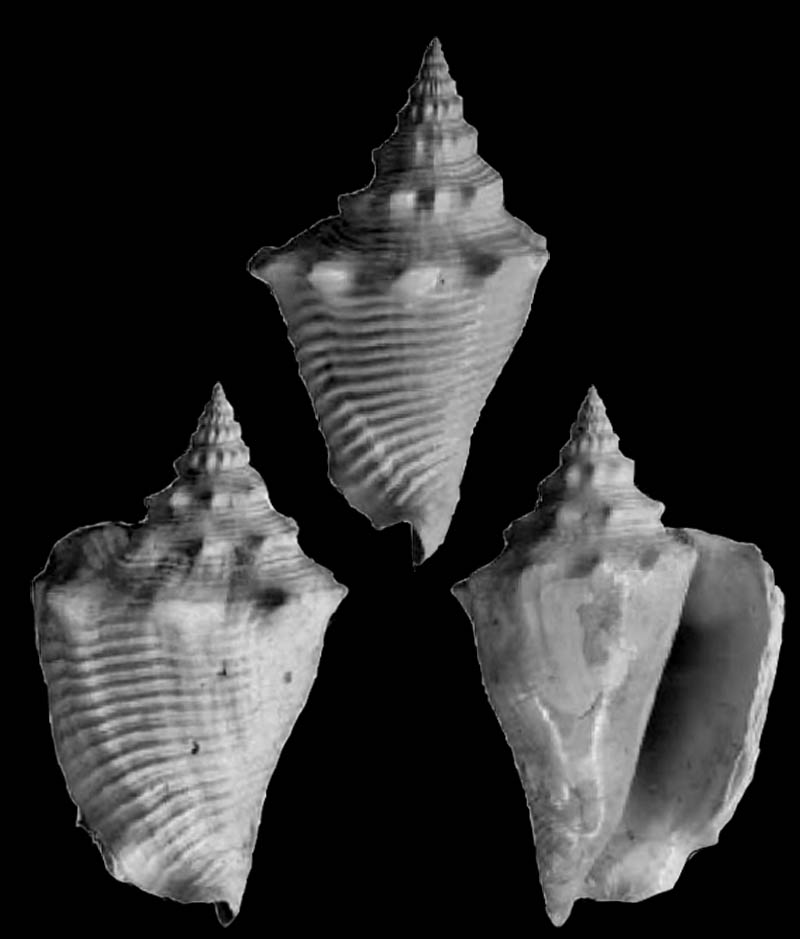Species / Persististrombus Mardieae
Stromboidea
Original Description of Strombus mardieae by Petuch, 2004:
- "Shell small for genus, proportionally narrow, with high, protratcted spire; shoulder of body whorl sharply angled, ornamented with 10 large, pointed knobs; last 2 spire whorls with 10 large knobs per whorl; early whorls with 16-18 low, rounded knobs per whorl; body whorl heavily sculptured with 21-25 large, prominent, evenly spaced spiral cords; finer spiral threads present between cords; spire whorls sculptured with 6-7 large spiral cords; anterior end encircled with 8 small, low spiral cords; aperture proportionally narrow, with lip of adults not expanded, paralleling parietal area; posterior edge of lip almost perpendicular to shell axis, only slightly sloping."
Type material: Holotype no. AMNH FI-50654, length 66 mm, width 46 mm; Paratype coll. E. Petuch, length 37 mm
Locus typicus: Chipola River, 0,5 km north of the mouth of Ten mile Creek, Calhoun County, Florida, USA
Stratum typicum: Chipola Formation, Alum Bluff Group, (Burdigalian), Miocene
Etymology: Named after Ms. Mardie Drolshagen Banks, Visual Communications Department, Florida Atlantic University.
Strombus mardieae Petuch, 2004, pl. 17, fig. A, I, J
Petuch, 2004, p. 273 about Strombus mardieae:
- "This new species represents the third known Strombus to be found in the Chipola Formation, occurring together with S. chipolanus Dall, 1890 (Plate 17, E and F) and S. aldrichi Dall, 1890 (Plate 17, G and H). Of these, S. mardieae is most similar to S. chipolanus, but differs in being a much more slender and elongated shell with a Proportionally higher spire, in having a less-flaring, straight-edged lip, in having a proportionally smaller and narrower aperture, and in having stronger and more prominent spiral cords on the body whorl and spire. The posterior end of the lip of S. chipolanus is angled anteriorly, sloping strongly downward from the shoulder, while that of S. mardiae is relatively straight and flat, with only a small angle, being essentially perpendicular to the shell axis. Of the three sympatric Chipola species, S. mardieae is the rarest, with only a few specimens having ever been collected, while S. aldrichi is the commonest, often accumulating in dense beds."
References
- Petuch, E. (2004). Cenozoic Seas. Boca Raton: CRC Press, 328 p.

